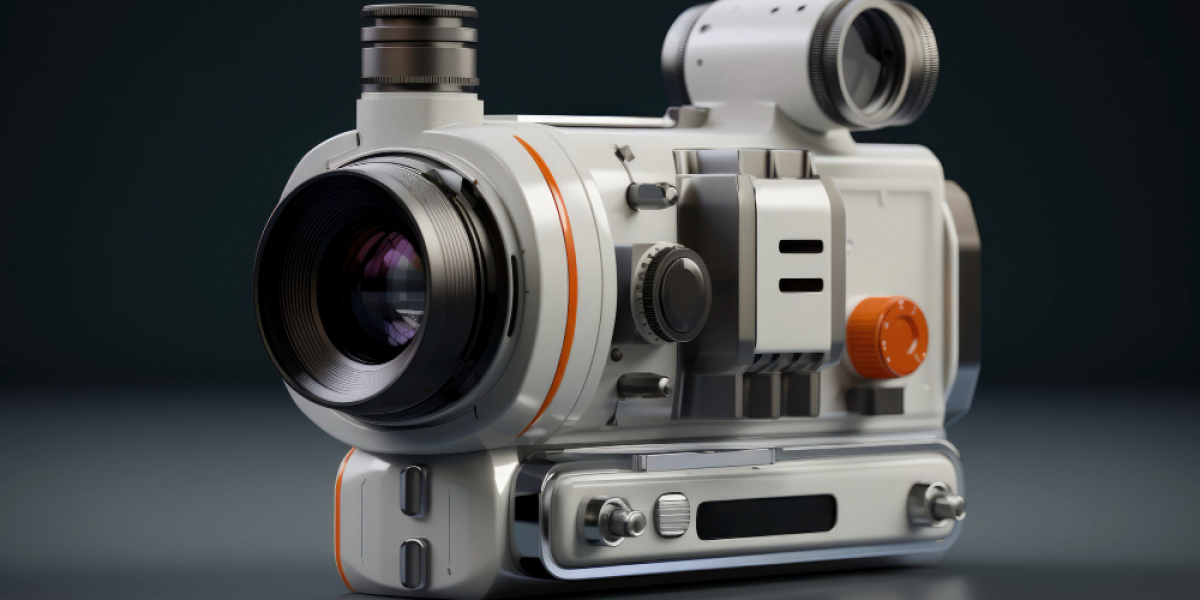Global Industrial Machine Vision Camera Market
Market Overview
The Global Industrial Machine Vision Camera Market is on the brink of significant growth, driven by the increasing need for automation, quality assurance, and process control across various industries. This market is projected to expand from a value of USD 12.9 billion in 2024 to an impressive USD 56.0 billion by 2033, reflecting a robust CAGR of 17.7%. This growth trajectory underscores the pivotal role that imaging systems play in enhancing operational efficiency and maintaining stringent quality standards, particularly in sectors such as automotive, electronics, and pharmaceuticals.

The industrial machine vision camera market encompasses a variety of imaging systems designed for automated inspection and quality assurance. These advanced cameras employ sophisticated algorithms and artificial intelligence (AI) to analyze visual data in real-time, facilitating informed decision-making and enhanced operational performance. As manufacturers increasingly adopt these technologies, they gain a competitive edge by boosting productivity and ensuring high-quality outputs.
Driving Factors Behind Market Growth
Increased Automation in Manufacturing
The push towards automation in manufacturing is one of the primary drivers of the Global Industrial Machine Vision Camera Market. With manufacturers seeking to improve operational efficiency and reduce labor costs, machine vision cameras have become essential tools. These systems enable real-time monitoring, quality inspections, and predictive maintenance, resulting in increased productivity and decreased errors. The industrial automation sector is projected to grow at a compound annual growth rate of over 9% until 2025, highlighting the escalating reliance on machine vision technologies.
Expansion of E-commerce and Logistics
The rapid growth of e-commerce has significantly increased the demand for sophisticated industrial machine vision systems. As online shopping surges, companies are investing heavily in technologies that optimize warehousing and distribution operations. Machine vision cameras facilitate automation in sorting, packaging, and shipping processes, enhancing speed and accuracy. Recent forecasts suggest that global e-commerce sales could reach $6 trillion by 2024, further emphasizing the need for efficient logistics solutions powered by machine vision technology.
Enhanced Quality Control Requirements
With rising consumer expectations and stringent regulatory standards, manufacturers must prioritize quality control. Machine vision systems are vital for conducting high-speed inspections, quickly identifying defects, and ensuring compliance with safety regulations. Industries such as pharmaceuticals, automotive manufacturing, and food processing particularly benefit from these technologies. Reports indicate that businesses implementing advanced quality control measures can reduce defect rates by up to 30%, underscoring the impact of machine vision on operational efficiency.
Get a Totally Free PDF Sample Copy of this Report@ https://dimensionmarketresearch.com/report/industrial-machine-vision-camera-market/request-sample
Key Trends Shaping the Market
Growth of Deep Learning Technologies
Deep learning technologies are transforming the landscape of industrial machine vision cameras. By enabling cameras to recognize complex patterns and make rapid decisions, these technologies enhance defect detection accuracy and optimize production processes. As industries increasingly adopt AI solutions, the demand for machine vision cameras equipped with deep learning capabilities continues to rise.
Importance of Food Safety and Inspection
Heightened awareness of food safety has led the food and beverage sector to adopt stringent inspection protocols. Machine vision cameras play a crucial role in ensuring compliance with these standards, automating checks for contamination and packaging integrity. This emphasis on safety propels demand for advanced vision systems, which help maintain consistent quality control in food production.
Integration of Data Analytics
The integration of data analytics into machine vision systems is another significant trend. Companies are seeking to leverage big data for operational insights, and visual analysis is becoming an integral component of this process. Cameras that connect seamlessly to analytics platforms provide businesses with actionable insights, driving decision-making and continuous improvement in manufacturing environments.
Challenges Facing the Market
Variability in Production Environments
One of the significant challenges in the Global Industrial Machine Vision Camera Market is the variability present in production environments. Different industries exhibit unique lighting conditions, surface textures, and operational speeds, necessitating tailored solutions. Standard camera systems may struggle to deliver consistent image quality under fluctuating conditions, leading to potential hesitance among manufacturers to invest in machine vision technology.
Image Acquisition Difficulties
Image acquisition is critical to the effectiveness of machine vision systems. Factors such as motion blur, inadequate lighting, and the need for high-resolution images can adversely affect data quality. This can result in misidentifications and increased error rates, which are particularly concerning in quality control applications. The complexity involved in processing images further complicates the situation, deterring some organizations from adopting these systems.
Reluctance to Embrace New Technologies
Many companies, especially in traditional manufacturing sectors, exhibit reluctance to transition from established processes to advanced machine vision systems. Concerns over high initial costs, potential disruptions during implementation, and the need for extensive training can create perceived barriers to entry. This hesitation may prevent organizations from adopting innovative solutions, hindering overall market advancement.
Market Segmentation
By Component
The Global Industrial Machine Vision Camera Market can be segmented by component into two primary categories: hardware and software.
- Hardware held a dominant market share of approximately 60% in 2023, driven by the increasing demand for advanced imaging technologies essential for automation and quality control. Key hardware components include cameras, lenses, lighting systems, and related accessories.
- Software represented around 30% of the market, reflecting the growing integration of artificial intelligence and machine learning algorithms. These software solutions enhance data analysis, real-time monitoring, and decision-making capabilities, thereby improving overall operational efficiency.
By Product Type
The market is also segmented by product type, which includes:
- Line Scan Cameras: Commanding an impressive 47% market share in 2023, line scan cameras are particularly favored for high-speed applications in manufacturing and logistics.
- Area Scan Cameras: Accounting for approximately 36% of the market share, these cameras are versatile and can handle various imaging tasks, making them effective in both static and dynamic environments.
- Specialized Camera Types: The remaining 17% is split among specialized types, such as 3D or infrared cameras, which serve specific industry needs.
By Application
Applications of industrial machine vision cameras can be categorized as follows:
- Manufacturing: The leading segment, with about 45% market share, reflecting the critical role of machine vision in enhancing operational efficiency and quality assurance.
- Medical and Life Sciences: Representing approximately 25% of the market, this segment benefits from advances in imaging technology that enhance diagnostics and research capabilities.
- Security and Surveillance: Accounting for about 15%, this segment reflects the increasing emphasis on safety monitoring in both public and private sectors.
- Intelligent Transportation Systems: This segment holds approximately 10%, highlighting machine vision's role in improving road safety and transportation efficiency.
Regional Analysis
North America
North America leads the Global Industrial Machine Vision Camera Market, holding approximately 40% market share in 2023. This dominance is attributed to a robust manufacturing sector and rapid advancements in automation and AI technologies, facilitating the adoption of machine vision systems across various industries.
Europe
Europe accounts for around 30% of the market. The region's strong emphasis on research and development, particularly within automotive and industrial applications, propels the popularity of machine vision systems. Stringent quality control regulations further stimulate demand.
Asia-Pacific
Asia-Pacific represents about 20% of market share, with rapid industrialization in countries like China and India driving increased investments in automation technologies. The region's commitment to Industry 4.0 and smart manufacturing initiatives further enhances the relevance of machine vision technologies.
Competitive Landscape
The Global Industrial Machine Vision Camera Market is characterized by intense competition and innovation. Leading players include:
- Basler: Known for its extensive product offerings and advanced imaging technologies, Basler has positioned itself as a market leader.
- Cognex: Focused on robust software integration and deep learning capabilities, Cognex helps businesses optimize operations and enhance quality control.
- FLIR Systems Inc.: Specializing in thermal imaging solutions, FLIR caters to both industrial and security applications.
- Teledyne: Develops high-performance cameras to improve precision in manufacturing and inspection processes.
Other notable companies include Microscan Systems (Omron), Vieworks Co. Ltd., Sony, and National Instruments, each contributing unique solutions tailored to various industry needs.
Recent Developments
The market has witnessed several notable developments in recent years:
- January 2022: Increased demand for line scan cameras due to their effectiveness in high-speed applications, particularly in automotive and logistics sectors.
- June 2022: Companies began integrating AI into machine vision systems, enhancing real-time image processing and inspection accuracy.
- March 2023: Adoption of deep learning technologies increased, enabling cameras to recognize complex patterns and improve defect detection rates.
- August 2023: A shift toward smart factory implementations highlighted the role of machine vision in predictive maintenance and real-time monitoring.
- February 2024: The food and beverage sector adopted advanced machine vision systems for automated inspection, ensuring compliance with stringent safety standards.
FAQs
1. What is the projected growth rate of the Global Industrial Machine Vision Camera Market?
The market is anticipated to grow from USD 12.9 billion in 2024 to USD 56.0 billion by 2033, with a CAGR of 17.7%.
2. Which sector accounts for the largest share of the market?
The manufacturing sector is the largest segment, accounting for approximately 45% of the market share.
3. What are the primary applications of machine vision cameras?
Key applications include automated quality control in manufacturing, pharmaceutical inspection, e-commerce logistics optimization, and smart factory implementations.
4. What factors are driving the growth of the machine vision camera market?
Key drivers include increased automation in manufacturing, the expansion of e-commerce, and enhanced quality control requirements.
5. Which region is leading the Global Industrial Machine Vision Camera Market?
North America holds the dominant share, with approximately 40%, driven by a strong manufacturing base and advancements in automation technologies.
Conclusion
The Global Industrial Machine Vision Camera Market is poised for substantial growth, spurred by advancements in automation, quality control demands, and the integration of AI technologies. As industries increasingly recognize the value of machine vision systems, the market is set to evolve rapidly, creating significant opportunities for manufacturers and technology providers alike. With a favorable growth trajectory and an expanding range of applications, the future of industrial machine vision cameras looks promising.









